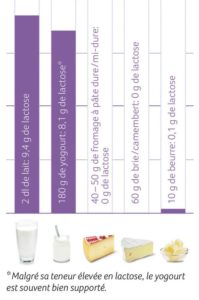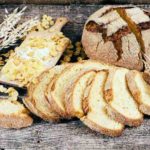If you are lactose intolerant, you cannot break down lactose sufficiently. The consequences can be unpleasant. With a few tips, however, you can adjust the amount of lactose to your individual needs. But first, it is important to find out what is causing the symptoms.
Abdominal pain and flatulence after eating can have very different causes. If they occur regularly, you should consult your family doctor. If tests show that lactose intolerance actually exists, the diet can then be sensibly adjusted with a nutritionist SVDE and the personally tolerable amount of lactose can be determined.
Choose cleverly instead of avoiding
Most lactose-intolerant people can tolerate a certain amount of lactose and should therefore not completely avoid dairy products:
• Milk and cream cheese such as quark or cottage cheese can be replaced by lactose-free variants
• Yoghurt is often well tolerated because part of the milk sugar is broken down during fermentation. In addition, the lactic acid bacteria help with digestion.
• Matured cheeses such as Emmental or Tilsiter can be tolerated without any problems because they are naturally lactose-free – this also applies to fondue and raclette cheese.
• Soft cheeses such as Brie or Camembert contain lactose in traces at most.
• Butter contains hardly any lactose and is usually well tolerated.
It is not so easy with processed products, which often contain lactose as an additive. This is hidden behind terms like milk powder, whey, or milk serum. The exact amount is usually not stated on the list of ingredients. If you are unsure, it is better to use unprocessed food.
ALSO LACTOSE-FREE:
• Water, mineral water, tea, coffee
• All types of fruit and vegetables, fruit and vegetable juices, herbs
• All cereals, pasta, potatoes
• Bread without added milk
• Pulses such as lentils, beans, chickpeas
• Meat, poultry, fish, eggs, tofu, quorn, seitan
• Nuts, seeds, kernels, all pure vegetable fats, and oils
• Honey, molasses, household sugar
• Pure table salt, pure spices, pure herb mixtures
Lactase deficiency is not dangerous
Incidentally, it is not dangerous to your health if you produce too little lactase, because it is not a vital enzyme. Nevertheless, you should not do without dairy products, as they are important natural sources of nutrients – including protein, fatty acids, calcium, magnesium, iodine, zinc, potassium, phosphorus and vitamins A, B₂ and B₁₂.
Lactose content per dairy product portion
 Special recipes are unnecessary
Special recipes are unnecessary
No special recipes are necessary for lactose intolerance. You can adapt most recipes yourself by replacing the dairy products that are not tolerated with a lactose-free variant. Normally, only milk and possibly fresh cheese such as quark need to be replaced by lactose-free products. If you want to switch to nut or cereal drinks, be aware that although these can provide flavor variety, they have a very different nutrient composition and are generally low in nutrients. Plant-based drinks can therefore not replace (lactose-free) milk.
Conclusion
Do you regularly suffer from abdominal pain and flatulence Consult your family doctor!
Find out how much of each dairy product you can tolerate.
If you are lactose intolerant, you will tolerate lactose better if it is combined with protein and fat in a meal.
Further information, recommendations and recipe ideas can be found at www.swissmilk.ch
On the subject of lactose, we offer the brochure «Clever auswählen. Beschwerdefrei geniessen» (Art.-Nr. 142094D) and a documentation folder (Art.-Nr. 142096D). Both can be ordered by calling: 031 359 57 28.
Producteurs Suisses de Lait PSL, Swissmilk
Susann Wittenberg, BSc en oecotrophologie
Weststrasse 10, case postale, 3000 Berne 6
nutrition@swissmilk.ch
Swissmilk
Tel. 031 359 51 11
www.swissmilk.ch



